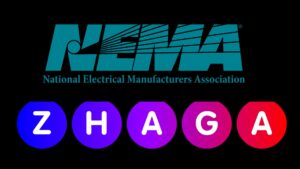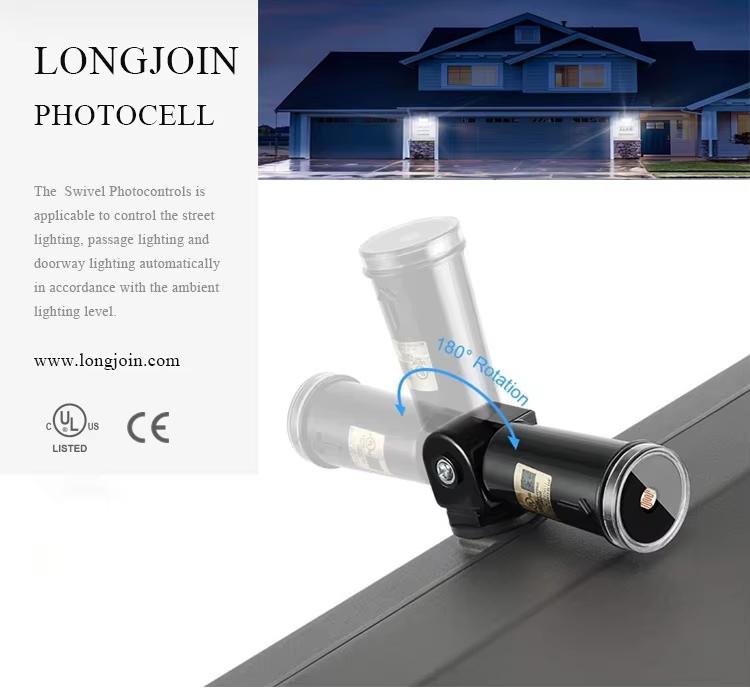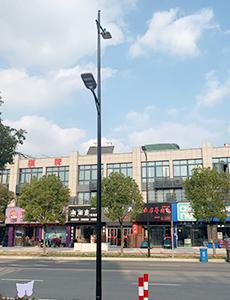Outline
- Introduction
- What Are NEMA Lighting Controls?
- What Are Zhaga Light Sensors?
- What Are the Core Differences Between NEMA and Zhaga?
- How To Select the Right Lighting Controller?
- The Bottom Line

When choosing a lighting control system, wiring compatibility matters. NEMA and Zhaga are two leading options, each with its own strengths. NEMA has long been the standard for street lighting. Zhaga, on the other hand, is built for today’s smart LED networks. Understanding the wiring details and use cases of both helps ensure a better match for your project. This article breaks it all down clearly and practically.
What Are NEMA Lighting Controls?
NEMA 3-Pin: The Classic Solution
The NEMA 3-pin street light controller is defined by ANSI C136.10. It’s one of the oldest and most widely used options. It was created for simple on/off control based on daylight. A photocell inside senses ambient light. The light turns on at dusk and off at dawn. No dimming. No remote access. Just dependable switching.
It’s mainly used in public streetlights. You’ll also find it in parking lots and pathways. These systems don’t need smart features. They just need to work reliably, day after day.
The twist-lock base ensures quick installation. It’s common in retrofit projects. The wiring is straightforward and easy to follow.
Wiring Details:
| Pin / Wire | Function | Connection Details |
| 1 (Black) | Line (Hot) | Connect to AC live power source |
| 2 (Red) | Load | Connect to the luminaire’s input |
| 3 (White) | Neutral | Connect to AC neutral return |
Ideal Use Cases:
- Dusk-to-dawn street lighting remote control
- Municipal setups with no dimming
- Budget-conscious projects
- Locations without smart grid integration
- Retrofit upgrades to older poles
If all you need is basic control, this is still a solid choice. It works best where durability and simplicity are more important than advanced control.
NEMA 5-Pin: Adding Dimming Capabilities

The 5-pin NEMA photosensor builds on the 3-pin design. However, it adds two extra pins for dimming. The design complies with ANSI C136.41. These extra pins carry low-voltage signals. They allow the controller to dim the light as needed.
This makes it suitable for energy-saving applications. The photocell still controls on/off switching. But now, you can send dimming commands. That’s helpful during off-peak hours. It supports 0-10V dimming or DALI, depending on system design.
Wiring remains simple. Three wires handle power and switching. Two more handle dimming. The dimming wires don’t carry high voltage. They interface with the driver or dimmable ballast.
Wiring Details
Besides the basic three pins, these models add two extra pins. Their wiring detail follows as given below.
| Pin | Function | Correct Connection |
| Grey | Dim (+) | Connect to driver’s positive dimming input |
| Purple | Dim (–) | Connect to driver’s negative dimming input |
Ideal Use Cases
- Used in areas that want adaptive brightness.
- Good for urban streets, parking lots, and public squares.
- Often installed in smart lighting pilot projects.
- Ideal where infrastructure is being upgraded from 3-pin to dimmable lighting.
- A great fit when basic dimming is needed without full smart control.
NEMA 7-Pin: Ready for Smart Lighting
The 7-pin version offers full control and communication. It builds further on the 5-pin setup. In addition to dimming, it adds two pins for data. These pins handle digital signals. The system uses protocols like DALI, UART, or wireless interfaces.
This configuration allows for remote control. You can send commands from a control center. You can also receive feedback, like energy usage or lamp failure. It’s designed for advanced smart city applications.
The 7-pin socket is backward compatible. You can still use it with 3-pin or 5-pin controllers. But for full function, you need a 7-pin photocell and a smart driver.
Wiring Details
Here are the details for two additional pins.
| Pin | Function | Correct Connection |
| Blue | Communication Line 1 | Connect to controller signal interface |
| Yellow | Communication Line 2 | Connect to return or data feedback path |
Ideal Use Cases
- Perfect for modern smart city grids.
- Used in highways, tunnels, and intersections needing real-time response.
- Fits in advanced lighting management systems.
- Chosen by cities looking to track usage and automate maintenance.
- Best used when integrating with IoT networks or cloud-based platforms.
What Are Zhaga Light Sensors?

The Zhaga Book 18 control is designed specifically for LED fixtures. It’s compact, sealed, and lightweight. The design helps to keep the system durable and resistant to environmental conditions. This makes it perfect for outdoor or industrial use. The connector is often mounted on the side or top of the luminaire for easy access.
The photocontrol receptacle integrates seamlessly with D4i-certified drivers. This means it supports modern functionalities like remote monitoring and energy-saving adjustments. The system is built to ensure long-term performance in a variety of environments.
Zhaga 4-Pin Wiring Details
The Zhaga 4-pin connector is simple yet powerful. It allows for a range of features like dimming and remote updates. Here’s the breakdown of the 4 pins:
| Pin | Function | Correct Connection |
| Pin 1 | 24V DC Power Supply | Connect to DC power input for the luminaire |
| Pin 2 | DALI Bus (Data Signal) | Connect to DALI-compatible data bus |
| Pin 3 | DALI Bus (Data Signal) | Connect to DALI-compatible data bus |
| Pin 4 | Digital Input or Function | Can be used for manufacturer-specific functions or additional inputs |
Ideal Use Cases
Zhaga LED street light photocells are ideal for smart lighting in urban settings. They are perfect for projects requiring energy reporting and remote dimming. Modern architectural lighting also benefits from their small size and flexibility. Cities upgrading their infrastructure to comply with D4i standards can rely on Zhaga controls for efficient integration and communication.
These systems fit perfectly into environments where energy savings, remote monitoring, and future-proofing are top priorities.
What Are the Core Differences Between NEMA and Zhaga?
| Feature | NEMA (3/5/7 Pin) | Zhaga Book 18 (4 Pin) |
| Connector Type | Round, larger footprint | Compact, low-profile |
| Standard | ANSI C136.10 / C136.41 | Zhaga Book 18 / D4i |
| Power Supply | Mains voltage (110–277V AC) | 24V DC |
| Communication Protocol | 0–10V, UART, DALI, RS-485 (7-pin) | DALI-2 / D4i only |
| Use Case Focus | Traditional lighting, mixed-use | Smart LED luminaires |
| Installation | Top-mount | Top or side-mount |
| Smart Features | Medium to advanced (depending on pins) | High-level smart features built-in |
| Compatibility | Broad legacy compatibility | New-generation systems only |
How To Select the Right Lighting Controller?
Different lighting projects need different types of automatic light sensors. Your choice should be based on system compatibility, energy goals, and the level of control required. Here’s a clear guide to help you pick the most suitable option:
- For Traditional Street Lighting
Use NEMA 3-Pin or NEMA 5-Pin for simple dusk-to-dawn control and easy replacements.
- For Energy-Efficient, Dimmable Lighting
Choose NEMA 5-Pin or Zhaga Book 18 with 0–10V or DALI dimming support.
- For Remote Monitoring and Advanced Control
Go for NEMA 7-Pin, which supports sensors and network communication.
- For Modern LED Projects Requiring DALI Support
Select Zhaga Book 18 for seamless integration with D4i drivers and smart diagnostics.
The Bottom Line
NEMA and Zhaga offer different strengths for different lighting needs. Choosing the right one ensures better performance and long-term value. For quality NEMA and Zhaga photocells, Chi-Swear provides reliable, tested solutions trusted by industry professionals.
External Links
- https://www.nema.org
- https://en.wikipedia.org/wiki/Zhaga_Consortium
- https://www.ansi.org
- https://en.wikipedia.org/wiki/0-10_V_lighting_control
- https://www.dali-alliance.org
- https://en.wikipedia.org/wiki/Universal_asynchronous_receiver-transmitter
- https://www.zhagastandard.org/?view=article&id=64:book-18&catid=10






